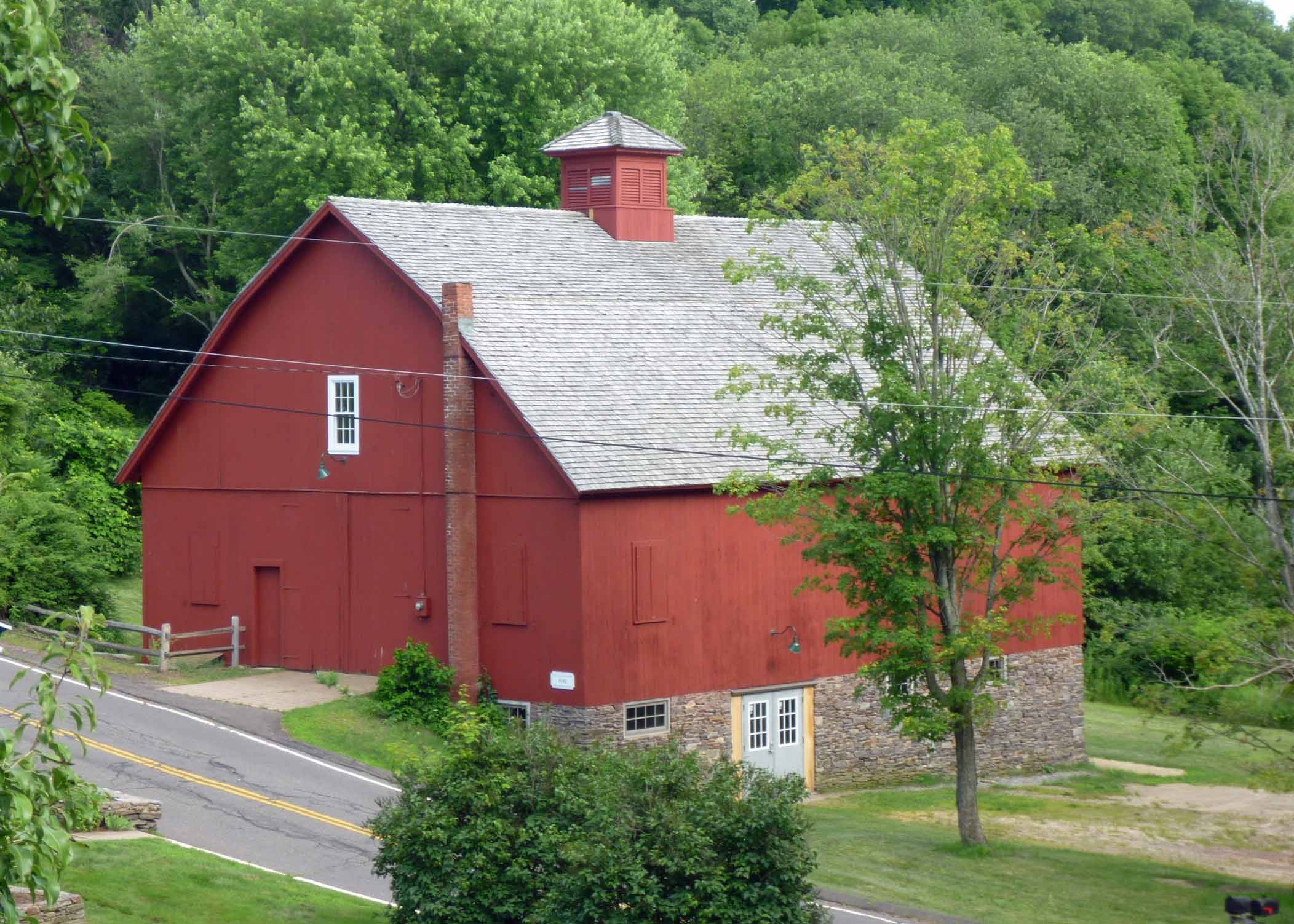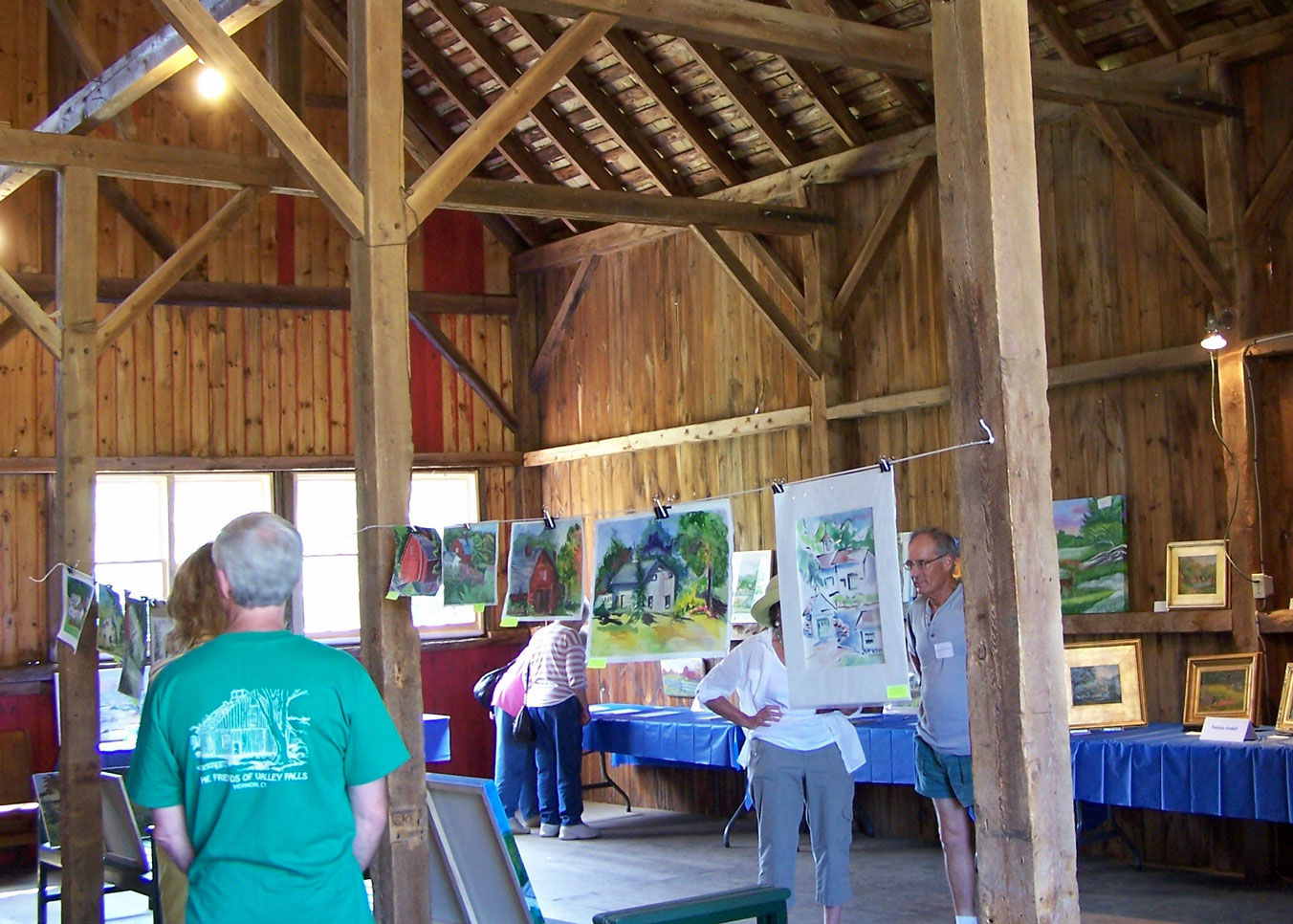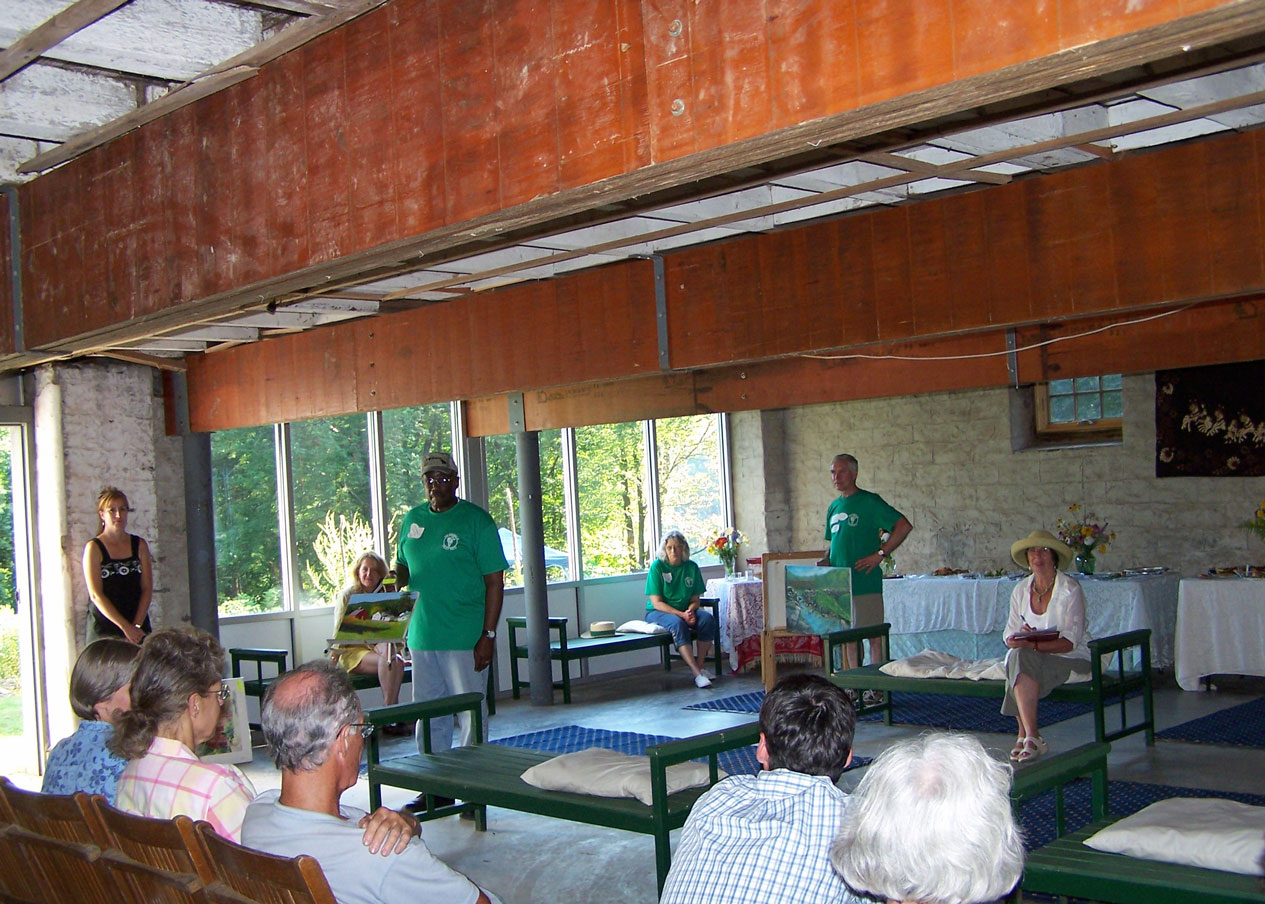 |
| Home | Geography | History | Biology | Recreation | News | Resources |
| Valley Falls Farm |
The Red Barn At Valley Falls FarmThe Red Barn is owned by the Town of Vernon but was an integral part of Valley Falls Farm. It was built between 1875 and 1920 and is used by the town for summer and youth programs. The following description was written by ED HOOD from Sturbridge Village in October 2000. The interior photos were taken on Artists' Day 2008 and 2009. Click on them for a larger view. General Description
The Valley Falls Barn is a late timber frame structure, with all of its timbers, braces and lumber cut with a circular saw. The gambrel roof style is the most common in the last quarter of the 19th century and the first two decades of the 20th. The overall form of the main floor of the barn is a very traditional one from the middle of the 19th century. All of this suggests a broad date range of 1875 to 1920 for the building-possibly leaning towards the earlier of the date range. The gambrel roof of this barn allowed for a very large amount of hay storage in its upper levels, though much of the framing and scaffolding for this has been removed. There was a hay fork or "horse fork" suspended from the ceiling so that hay could be hoisted up from the main center drive to this upper storage area. At some point the purlin tie-beams and their braces were sawn out, necessitating the nailing-on of cross-timbers to help compensate for this change. Whether this removal was done to accommodate the hay fork, or for other purposes is uncertain. Main Floor
The main floor of the barn consists of a center drive with only one entrance (these barns could sometimes be driven through). The east side of the barn (to the left as you enter) was almost certainly originally an aisle for hay storage, with a grain room at its near north-end, which could possibly be a later addition. The west side of the barn also has an enclosed room at its near north-end, possibly having served as a tack room for horse harnesses and related equipment, and may well have been a later addition to this space as well. The remainder of the west side was originally a stable area, as evidenced by the extensive chew marks on the wall nailers around the perimeter of this area. In a typical barn plan, this would have been stables for milking cows, along with heifers and other cattle. No evidence of other subdivisions of this area is readily apparent. After a milking stable was set up in the basement, it is possible that this area became a horse stable. It is worth mentioning that the lack of stable windows upstairs is unusual, and suggests that the siding on at least this side of the barn was replaced at some point. Otherwise, this would have been a very dark work space prior to the invention of electric lights. Milking Stable
The milking stable in the basement may have co-existed with the milking stable above, though it is more likely that at some point the milking stable was moved from its original location upstairs, down to the basement. At this point the upstairs was changed into a new use, not clearly documented by physical evidence. The downstairs milking area has all of the hallmarks of an early 1900's dairy production area, with a concrete floor, manure gutters (since replaced with a new concrete floor), and lots of whitewash. The rustication, or scoring of parging on the walls to resemble stone blocks, is a very interesting detail. Adjacent to the basement milking stable, but walled-off, are two dairy production rooms, one of which contains a cork-lined cooling tank that utilized flowing spring water (some pipes still survive). In the larger of the two rooms is an early water heater (ca 1890's), and a large concrete floor with a drain gutter in it. A pass-through window provided access to the road for the removal of milk cans or other products from this space. These rooms may well have been only for liquid milk handling, or some part or all of the cheese making process may have taken place here. In any event, these rooms are somewhat rare survival evidence from the early days of the 20th century dairy work. |
Home | Activities | News | References | Search | Site Map | Contact Us © Copyright The Tankerhoosen. All rights reserved. |


